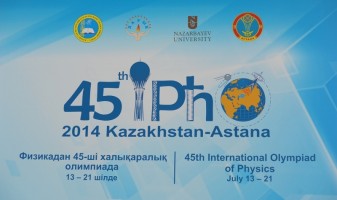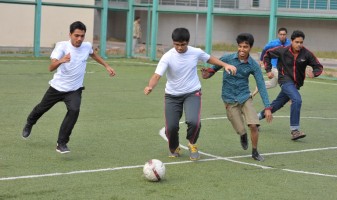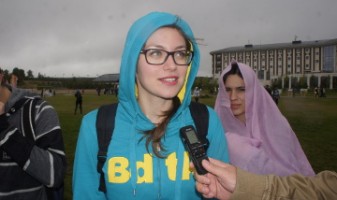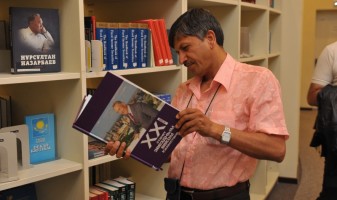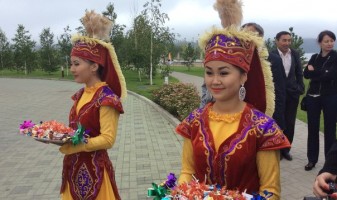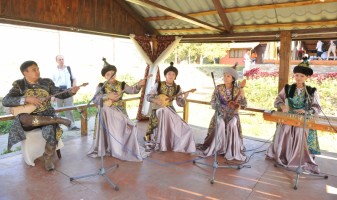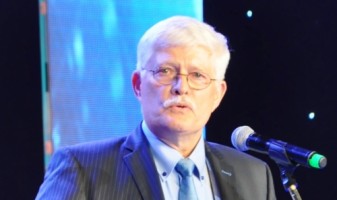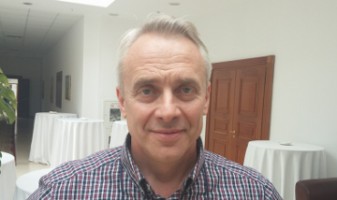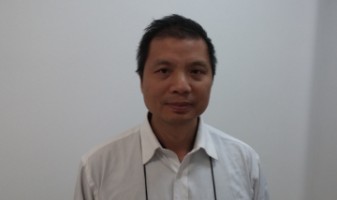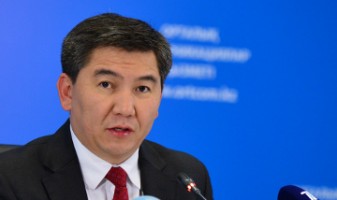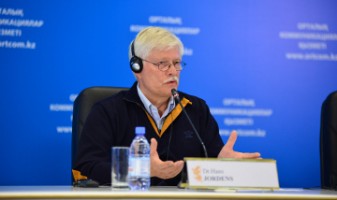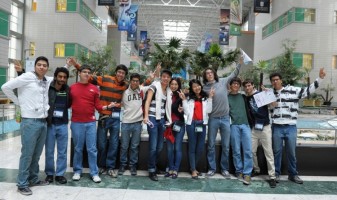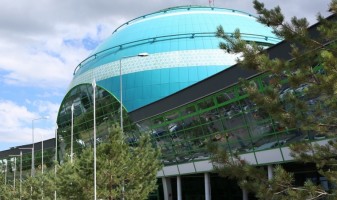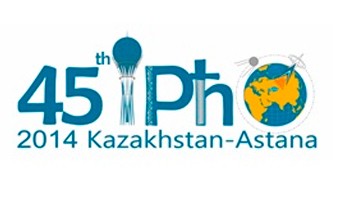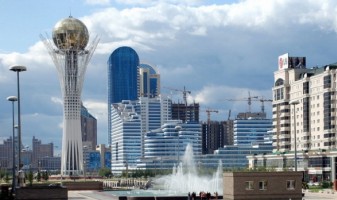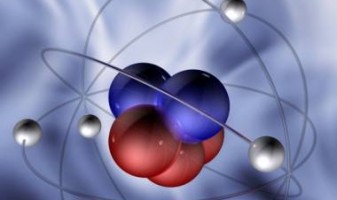The Republic of Kazakhstan is a unitary state with a presidential form of government. According to the Constitution, the state proclaims itself a democratic, secular, legal and social state whose highest values are an individual, his life, rights and freedoms.
Kazakhstan gained independence on December 16, 1991.
The capital is the city of Astana.
The state language is Kazakh.
The Russian language has the status of a language of interethnic communication.
Monetary unit - tenge.
The President of the Republic of Kazakhstan is the head of state, its highest official, who determines the main directions of the domestic and foreign policy of the state and represents Kazakhstan within the country and in international relations. The President is the symbol and guarantor of the unity of the people and the state power, inviolability of the Constitution, rights and freedoms of an individual and citizen.
The Government implements the executive power of the Republic of Kazakhstan, heads the system of executive bodies and exercises supervision of their activity.
Legislative functions are performed by the Parliament of the Republic of Kazakhstan, which consists of two Chambers acting on a permanent basis: the Senate and the Majilis.
The Senate is composed of deputies represented in an order, established by the constitutional law, on two persons from each oblast, major city and the capital of the Republic of Kazakhstan. Fifteen deputies of the Senate are appointed by the President of the Republic taking into account necessity of maintenance of representation for the Senate of national-cultural and other significant interests of a society. The Majilis consists of hundred seven deputies elected in an order, established by the constitutional law. Nine deputies of the Majilis are elected by the Assembly of the people of Kazakhstan. Term of the powers of Senate deputies is six years; term of the powers of the Majilis deputies is five years. Currently three parties are presented in the Mazhilis – “Nur Otan” People's Democratic Party, “Ak zhol” Democratic Party of Kazakhstan and Communist People’s Party of Kazakhstan.
By its administrative-territorial structure the country is divided into 14 regions and 2 cities of republican significance:
- Astana - the city of republican significance – the capital of Kazakhstan
- Almaty - the city of republican significance
- Akmola region
- Aktobe region
- Almaty region
- Atyrau region
- East Kazakhstan region
- Zhambyl region
- West Kazakhstan region
- Karagandy region
- Kostanay region
- Kyzylorda region
- Mangystau region
- Pavlodar region
- North Kazakhstan region
- South Kazakhstan region
The population of Kazakhstan as of June 1, 2012 was 16 million 760 thousand people. According to the national census the ethnic structure of the Kazakhstan society by 2009 looks as follows:
- Kazakhs - 63,07 %
- Russians - 23,70 %
- Uzbeks - 2,85 %
- Ukrainians - 2,08 %
- Uygurs - 1,40 %
- Tatars - 1,28 %
- Germans - 1,11 %
- Others - 4,51 %

Kazakhstan is located in the centre of the Eurasian continent. Its territory is as large as 2 million 724,9 thousand square kilometers and accordingly it occupies the ninth place in the world by its size. In the North and West the republic has common borders with Russia - 7 591 km (the longest continuous overland border in the world), in the East with China - 1 783 km, in the South with Kyrgyzstan - 1 242 km, with Uzbekistan - 2 351 km and with Turkmenistan - 426 km. The total length of overland borders - 13 200 km. Besides that, there are two midland seas in its territory – the Caspian and Aral. Kazakhstan is the largest country in the world that has no direct access to the World ocean.
A large part of the country’s territory consists of deserts - 44 % and semi-deserts - 14 %. Steppes cover 26 % of Kazakhstan’s territory, forests - 5,5 %. There are 8,5 thousand rivers In Kazakhstan. The Northeastern part of the Caspian sea’s water area is situated within the country’s territory. The Aral sea is shared between Kazakhstan and Uzbekistan. There are 48 000 big and small lakes in Kazakhstan. The largest of them are Aral sea, Balkhash, Zaisan and Alakol.
Due to the remoteness from oceans the country has an extreme continental climate. The average temperature in January is around −19 °C in the north and −2 °C in the south, the average temperature in July is around +19 °C in the north and +28 °C in the south. Summer is hot and dry, winter is cold and snowy.
The Republic of Kazakhstan is an industrial country with mining operations being one of the main sources of its economic growth. The country’s mineral raw material base consists of more than 5 000 deposits which expected value is estimated at tens of trillion US dollars. The country holds first place in the world with regard to explored reserves of zinc, tungsten and barite, second - silver, lead and chromites, third - copper and fluorite, fourth - molybdenum, sixth - gold.
Kazakhstan also has considerable reserves of oil and gas, which are concentrated in its western areas. Nowadays the country belongs to the group of the world’s leading oil-producing states with volumes amounting to more than 80 million tons of oil and gas condensate a year. According to plans the annual extraction will be increased to 120 million tons by 2020. At present Kazakhstan is in 9th place in the world with regard to confirmed reserves of oil. Besides that, the country is in 8th place by the reserves of coal and 2nd place by the reserves of uranium.
Traditionally great attention in the country is paid to development of the agricultural sector. Kazakhstan is among world’s top ten grain exporters and is one of the leaders in flour export. Farming is well-developed in the north - 70 % of arable lands are used for growing grain and technical crops - wheat, barley, millet. In the south of the country rice, cotton and tobacco are grown. Kazakhstan is also known for its gardens, vineyards and gourd plantations. Animal husbandry is the leading branch of the agriculture. The key areas of the animal husbandry are sheep breeding, horse breeding, camel breeding, cattle breeding and pig breeding. Poultry farming and fishery are also developed in the country.
In a short historical term - from the moment of gaining independence in 1991 GDP per capita has increased by 16 times - from 700 to 12 000 US dollars, which is a phenomenal result even in comparison with swiftly developing southeast countries – so-called "tigers". According to British experts’ estimations, Kazakhstan is in third place after China and Qatar among 25 countries with most dynamic economies of the XXI century’s first decade. The country is in upper middle income group of countries as per World bank’s classification.
Over the years of independence Kazakhstan attracted 150 billion US dollars of foreign investments that makes up about 70 % of the total amount of all investments attracted to the Central Asia. The country’s international reserves as of June 1, 2012 made up about 85 billion US dollars, of them more than 50 billion US dollars are related to the National fund.
In the World bank’s 2011 “Doing Business” ranking Kazakhstan took 47th place, leaving behind all CIS countries. In the 2011 World Competitiveness ranking of the International Institute for Management Development (IMD) the country was in 36th place being ahead of Indonesia, Turkey, Italy and many other countries.
Kazakhstan’s foreign trade turnover in 2011 made up more than 125 billion dollars. The main export goods are produced in the mining, fuel and energy, metallurgical, chemical and grain industries. The country’s main trading partners are Russia, China, European countries and the CIS.
Aimed at the economy’s diversification the State program of forced industrial and innovative development is successfully implemented in the country. According to this strategic initiative old enterprises are being modernised and new enterprises and manufactures are opened nationwide.
Kazakhstan is implementing a large scale project “New Silk Way” which aims to revive the country’s historical role as a connecting link in the continent and transform it into a largest business and transit hub of the region, a bridge between Europe and Asia. As a result of implementation of this mega-project by 2020 the volume of cargo traffic passing through the country should increase by nearly 2 times and subsequently make up at least 50 million tons a year.
Kazakhstan’s touristic cluster also has a significant potential that is capable to convert large landscape riches and the unique cultural-historical heritage of the country into new opportunities for development.
Within large scale social modernisation of the country new schools, professional colleges and universities are being constructed, up-to-date medical clinics and hospitals are put into service and the system of social support of the population is being improved.
Kazakhstan is a country with a unique culture and a rich past. It is a direct historical successor of state formations established by nomads of the Great steppe. Accordingly, Kazakhstan is consistently implementing the main geopolitical mission - assistance in integration and formation of a common space of peace and creativeness in Eurasia.
At present representatives of 130 ethnic groups live in the country. A consultative-advisory body on harmonisation of interethnic relations - the Assembly of the people of Kazakhstan is successfully functioning. In 2012 the IV Congress of Leaders of World and Traditional Religions took place in Astana and was attended by 85 delegations from 40 countries of the world. Annually since 2008 leading economists, analysts and experts from all over the globe are gathered at the Astana Economic Forum. In the beginning of 2011 VII Winter Asian Games were successfully conducted in Astana and Almaty, while the national team took first place in team rankings.
As a leader in the Central Asia, the country makes a considerable contribution to strengthening of the region’s stability. The country has achieved big successes on the international scene. The evidence of this is Kazakhstan’s OSCE chairmanship and conduct of this authoritative international organization’s Summit in December, 2010 in Astana. One of the country’s significant initiatives is the launch and development of the Conference on Interaction and Confidence-Building Measures in Asia – the Asian analogue of the OSCE. Kazakhstan’s creative activity during its chairmanship in the Organization of Islamic Cooperation – the leading organization of the Islamic world – has generated a positive feedback.
The country is also a recognized leader in the global antinuclear movement. As a whole, nowadays Kazakhstan actively co-operates with various countries-partners within the framework of a variety of international organizations, such as CIS, SOC, EurAsEC and etc.
In July, 2010 the Customs Union of Belarus, Kazakhstan and Russia was launched and since January 1, 2012 the Common Economic Space between these countries has started functioning. These unions are aimed at effective development of the states-participants’ economy and increase of the population’s living standard on the basis of a principle of free movement of goods, services, as well as financial and human capital through the borders of three countries.
The stable growth of all branches of the economy, the international recognition, the political stability serve as a basis for prosperity of the Kazakhstani society. Kazakhstan is a country that aspires to the future, honors its cultural traditions and successfully realizes the huge creative potential in the modern highly-competitive world.


